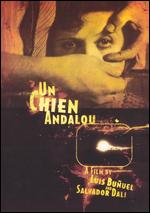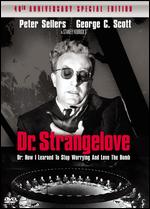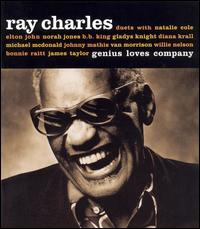The Last Post of the Semester
Since this is the last post of the semester, I thought I would use some items I had intended to use earlier but didn't have the chance.
 Un Chien Andalou
Un Chien Andalou
PN1997 .C44 1990
Un Chien Andalou is a landmark of early avant-garde cinema. Impatient with the polite cinematic surrealism of artists like Man Ray, Luis Buñuel and Salvador Dali wanted to stir things up and create "a despairing, passionate call to murder." Indeed, the images in Chien horrify even today, most notably the notorious eye-slashing scene near the beginning of the film. Many of the images seem to spring directly from Sigmund Freud's writings on sexual anxiety, such as breasts that mysteriously turn into a buttocks or a disembodied limb discovered by an androgyne, while others remain willfully obscure. Though the plot as such ostensibly concerns two quarrelling lovers, Buñuel and Dali gleefully destroyed all temporal and spatial continuity and systematically dismembered all forms of linear narrative and thought. Instead, meaning is created through visual associations, giving the film a thoroughly nightmarish quality. Chien went on to influence generations of filmmakers, from Maya Deren's masterpiece Meshes of the Afternoon (1943) to David Lynch's dark classic Eraserhead (1977), and it established the career of Buñuel, one of cinema's maverick filmmakers. ~Jonathan Crow, All Movie Guide
Watch Un Chien Andalou in its entirety:
Land without bread
PN1997 .C44 1990
"Do you see this wonderful valley?" director Luis Buñuel asked his crew as they began filming this documentary; "well, this is where Hell begins." Buñuel had long displayed a love/hate relationship with his native Spain, and his bitterness rarely flowed with greater force than in Las Hurdes. While the Spanish valley of Las Hurdes Bajas is green and beautiful, the mountainous region of Las Hurdes Altas is mired in economic and cultural poverty. As captured on film by Buñuel, Las Hurdes Altas is a land of flinty soil where few if any crops will grow. Bread is a rare luxury that must be brought in from the valley. Many of the residents subsist on pork, and most suffer from dietary deficiencies. The village's only salable export is a bitter variety of honey, and the Catholic Church has all but abandoned the region; the single teacher at the village's tiny schoolhouse is the town's sole contact with the outside world. Intermarriage among the families in the village has left many of the children retarded or handicapped, and the children who are born healthy often succumb to starvation and common illnesses. And Las Hurdes is a place with no art, culture or music; intellectually, the village is as barren as its soil. While it was Buñuel's sole documentary, Las Hurdes is thematically consistent with his other films; its fascination with insects, unblinking look at human cruelty, subtle but clear disgust with the Catholic Church, and moments of jet-black humor mark it as the work of Spain's greatest surrealist filmmaker. Las Hurdes was also embraced as an attack on Franco's regime; a British leftist group screened it in the United Kingdom as "The film that answers Franco." ~Mark Deming, All Movie Guide
Listen to excerpts from Genius Loves Company
Watch a Behind-the-Scenes featurette about the recording of Genius Loves Company
 Dr. Strangelove: or, How I learned to stop worrying and love the bomb
Dr. Strangelove: or, How I learned to stop worrying and love the bomb
PN1997 .D7 1997
Watch the trailer
or:
Watch a scene from Dr. Strangelove
 Un Chien Andalou
Un Chien AndalouPN1997 .C44 1990
Un Chien Andalou is a landmark of early avant-garde cinema. Impatient with the polite cinematic surrealism of artists like Man Ray, Luis Buñuel and Salvador Dali wanted to stir things up and create "a despairing, passionate call to murder." Indeed, the images in Chien horrify even today, most notably the notorious eye-slashing scene near the beginning of the film. Many of the images seem to spring directly from Sigmund Freud's writings on sexual anxiety, such as breasts that mysteriously turn into a buttocks or a disembodied limb discovered by an androgyne, while others remain willfully obscure. Though the plot as such ostensibly concerns two quarrelling lovers, Buñuel and Dali gleefully destroyed all temporal and spatial continuity and systematically dismembered all forms of linear narrative and thought. Instead, meaning is created through visual associations, giving the film a thoroughly nightmarish quality. Chien went on to influence generations of filmmakers, from Maya Deren's masterpiece Meshes of the Afternoon (1943) to David Lynch's dark classic Eraserhead (1977), and it established the career of Buñuel, one of cinema's maverick filmmakers. ~Jonathan Crow, All Movie Guide
Watch Un Chien Andalou in its entirety:
Land without bread
PN1997 .C44 1990
"Do you see this wonderful valley?" director Luis Buñuel asked his crew as they began filming this documentary; "well, this is where Hell begins." Buñuel had long displayed a love/hate relationship with his native Spain, and his bitterness rarely flowed with greater force than in Las Hurdes. While the Spanish valley of Las Hurdes Bajas is green and beautiful, the mountainous region of Las Hurdes Altas is mired in economic and cultural poverty. As captured on film by Buñuel, Las Hurdes Altas is a land of flinty soil where few if any crops will grow. Bread is a rare luxury that must be brought in from the valley. Many of the residents subsist on pork, and most suffer from dietary deficiencies. The village's only salable export is a bitter variety of honey, and the Catholic Church has all but abandoned the region; the single teacher at the village's tiny schoolhouse is the town's sole contact with the outside world. Intermarriage among the families in the village has left many of the children retarded or handicapped, and the children who are born healthy often succumb to starvation and common illnesses. And Las Hurdes is a place with no art, culture or music; intellectually, the village is as barren as its soil. While it was Buñuel's sole documentary, Las Hurdes is thematically consistent with his other films; its fascination with insects, unblinking look at human cruelty, subtle but clear disgust with the Catholic Church, and moments of jet-black humor mark it as the work of Spain's greatest surrealist filmmaker. Las Hurdes was also embraced as an attack on Franco's regime; a British leftist group screened it in the United Kingdom as "The film that answers Franco." ~Mark Deming, All Movie Guide
Genius Loves Company is the last studio album Ray Charles completed before his death in June 2004. Prior to this, the last studio album he released was Strong Love Affair in 1996, which was a stab at modern pop, filled with new songs and given an adult contemporary sheen. It was not one of his most distinctive efforts, even when judged against his latter-day albums, and it disappeared not long after its release. Charles left Warner and, years later, signed with Concord, who released Genius Loves Company, which had a decidedly different approach than the all-modern Strong Love Affair. As the title acknowledges with a wink, this is a duets album, which may be a little commonplace as far as latter-day superstar albums go but is still a step up from his previous studio album since it puts Ray Charles in a comfortable, relaxed situation that plays to his strengths. Instead of trying to put Charles in a modern setting, producers John Burk and Phil Ramone (Burk helmed seven of the album's tracks, Ramone is responsible for the other five, and their work fits together seamlessly) go for a clean retro setting with a few guitars, synths, and a rhythm section, occasionally dressing it with an orchestra or some strings. In other words, apart from the glistening production, it's not far removed from any of Charles' crossover records from the '60s, and he's also given a strong set of songs, largely familiar pop classics, from "Fever" and "Somewhere Over the Rainbow" to "Sorry Seems to Be the Hardest Word" and "Crazy Love." His duet partners are fairly predictable — classy newcomers like Norah Jones and Diana Krall, but also old stalwarts like Elton John, B.B. King, Johnny Mathis, James Taylor, Bonnie Raitt, and the ubiquitous Willie Nelson (who has never sounded older than he does here on "It Was a Very Good Year") — but they're also reliable, never overshadowing Ray yet never shrinking in his shadow either; in short, it sounds more like a real duets album than most superstar duet records. The end result is modest, friendly, laid-back, and pleasing, one that remains faithful to Charles' music while sounding relatively fresh. It may not be weighty enough to be a career-capping masterpiece, but it's sweet enough to be an appropriate final album — which is far more than can be said of Strong Love Affair, or any of the other albums he cut in the '80s or '90s for that matter. ~Stephen Thomas Erlewine, All Music Guide
Listen to excerpts from Genius Loves Company
Watch a Behind-the-Scenes featurette about the recording of Genius Loves Company
 Dr. Strangelove: or, How I learned to stop worrying and love the bomb
Dr. Strangelove: or, How I learned to stop worrying and love the bombPN1997 .D7 1997
In 1964, with the Cuban Missile Crisis fresh in viewers' minds, the Cold War at its frostiest, and the hydrogen bomb relatively new and frightening, Stanley Kubrick dared to make a film about what could happen if the wrong person pushed the wrong button — and played the situation for laughs. Dr. Strangelove's jet-black satire (from a script by director Stanley Kubrick, Peter George, and Terry Southern) and a host of superb comic performances (including three from Peter Sellers) have kept the film fresh and entertaining, even as its issues have become (slightly) less timely. Loaded with thermonuclear weapons, a U.S. bomber piloted by Maj. T.J. "King" Kong (Slim Pickens) is on a routine flight pattern near the Soviet Union when they receive orders to commence Wing Attack Plan R, best summarized by Maj. Kong as "Nuclear combat! Toe to toe with the Russkies!" On the ground at Burpleson Air Force Base, Group Capt. Lionel Mandrake (Peter Sellers) notices nothing on the news about America being at war. Gen. Jack D. Ripper (Sterling Hayden) calmly informs him that he gave the command to attack the Soviet Union because it was high time someone did something about fluoridation, which is sapping Americans' bodily fluids (and apparently has something to do with Ripper's sexual dysfunction). Meanwhile, President Merkin Muffley (Sellers again) meets with his top Pentagon advisors, including super-hawk Gen. Buck Turgidson (George C. Scott), who sees this as an opportunity to do something about Communism in general and Russians in particular. However, the ante is upped considerably when Soviet ambassador DeSadesky (Peter Bull) informs Muffley and his staff of the latest innovation in Soviet weapons technology: a "Doomsday Machine" which will destroy the entire world if the Russians are attacked. ~Mark Deming, All Movie Guide
Watch the trailer
or:
Watch a scene from Dr. Strangelove
 Genius Loves Company
Genius Loves Company








